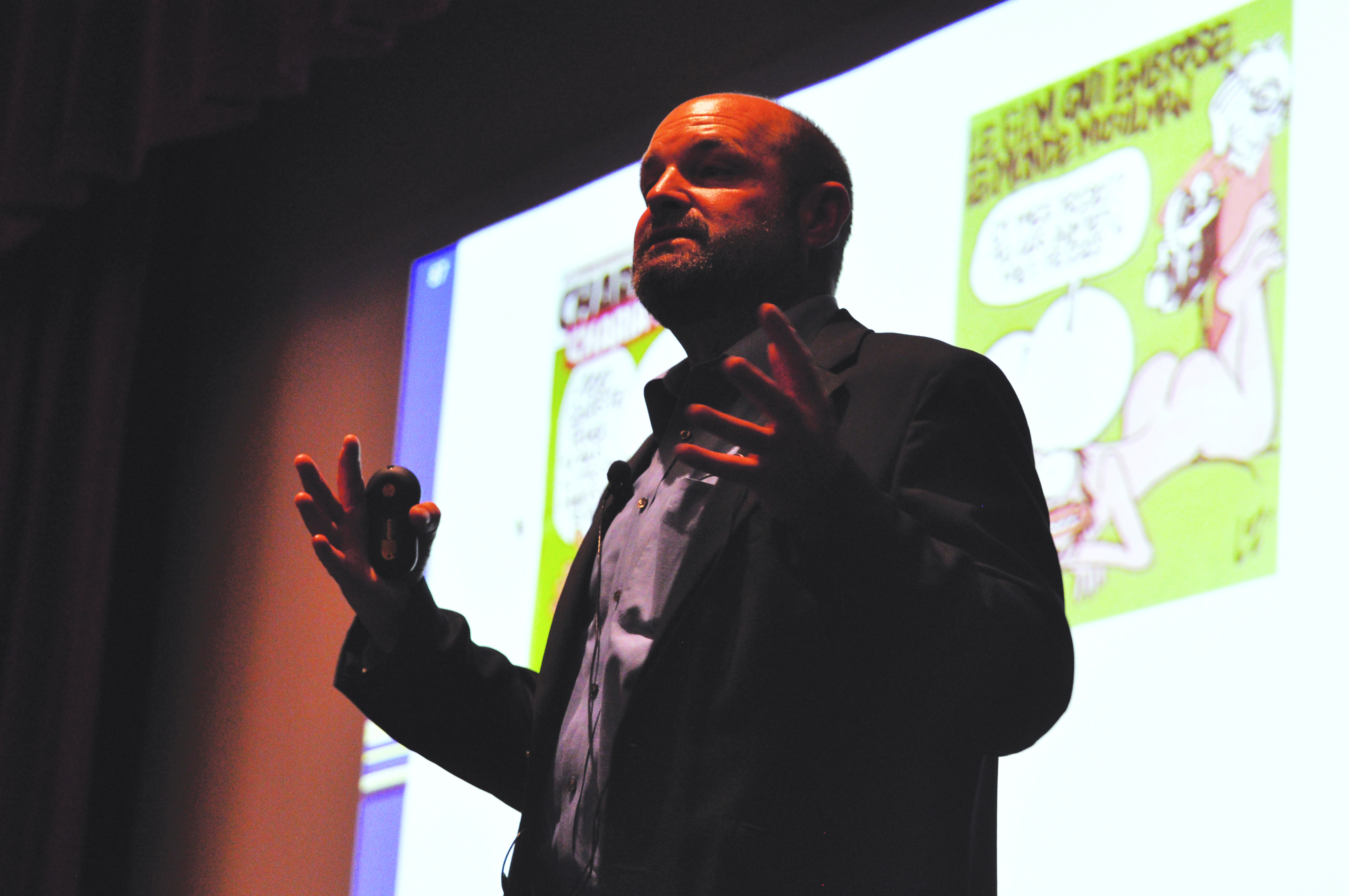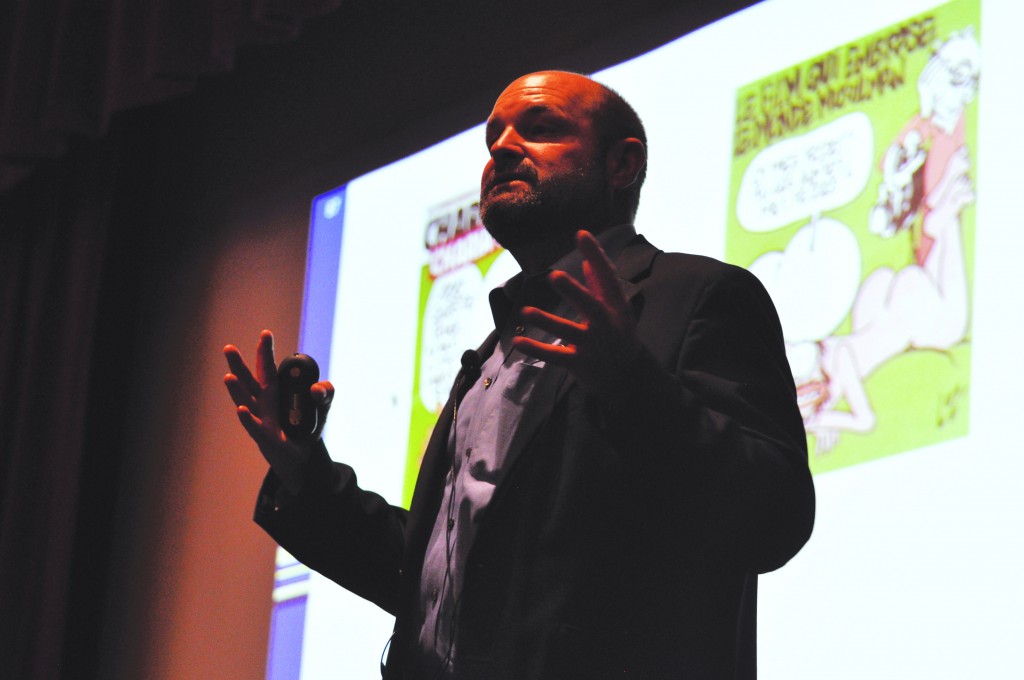

By Eric Trent
Surrounded by the enveloping darkness that has engulfed the interior of Peninsula College’s Little Theater, Mike Hiestand, stands on the stage in a pool of light, providing a beacon of hope for student journalists at colleges across the U.S.
Hiestand is here as part of First Amendment Day Festival, teaching students the importance of free speech and what their First Amendment rights are in a school setting.
Hiestand is a writer, a teacher, an entrepreneur, a veteran First Amendment and media law attorney, and is currently the Special Project Attorney for the Student Press Law Center, a non-profit organization that protects the freedom of press for student journalists.
Starting off his presentation, Hiestand uses a slideshow to highlight key landmark cases that contributed to the student freedom of speech and First Amendment laws that we have today, here in the U.S.
Tinker vs Des Moines, in 1965, involving Mary Beth Tinker wearing a black arm-band in school to protest the Vietnam War, was the such first instrumental case in which the court ruled that students do not shed their First Amendment rights at the school gate.
The 1986 case of Bethel School District vs Fraser made exceptions for that law, stating that sex talk and speech that invades the rights of others weren’t included in freedom of speech for students.
The Hazelwood School District vs Kuhlmeier case made another exception to the First Amendment where school officials were allowed to censor student speech if there is reasonable educational justification.
Hiestand then told the audience about how in 2014, he and Mary Beth Tinker constructed a plan to meet with students from across the U.S. and educate them on freedom of speech. They called it the “Tinker Tour” complete with even a Tinker Tour bus.
Hiestand and Tinker traveled 25,000 miles, through 41 states, and over 100 stops, talking with students at various schools, conventions, and colleges about the importance of freedom of speech and First Amendment laws.
“Mary Beth was really the girl on fire in the 60’s. She affected monumental change in this country. During the Tinker Tour, children wanted to be around her,” Hiestand said.
She told students the details of her famous story and the reasoning on why she wore the black arm-band, the main reason being that it was one of the only speech tools available at the time.
“There are so many different tools available now. There’s really this sphere that exists because so many students aren’t allowed to get on the web during school, unless it’s for research,” Hiestand said.
“We’re doing a lousy job of educating our students on the new speech tools that are available, at equipping the next generation in utilizing those tools,” Hiestand said.
“Young people are where change comes from. The Supreme Court recognizes that students have a valuable voice to share,” he concluded.

1 Trackback / Pingback
Comments are closed.